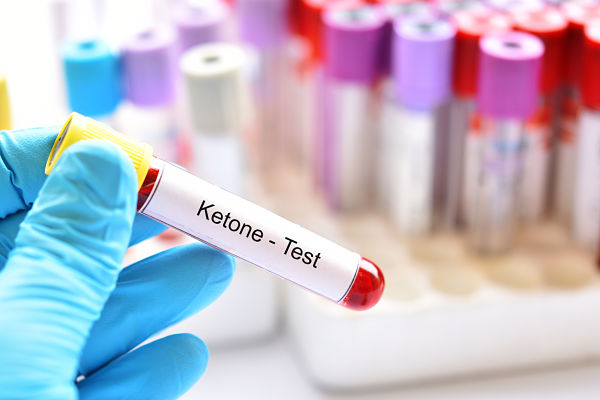Diabetes ketoacidosis – triggers, symptoms and treatment

A potentially life-threatening side effect of mainly type 1 diabetes, diabetic ketoacidosis (DKA) comes about because
- There is a shortage of insulin in your body
- The body then breaks down fatty acids for fuel
- A high level of blood acid molecules called ketones are produced – these build up in the blood and urine
DKA is a sign of severe uncontrolled diabetes and requires emergency treatment. As your blood becomes more acidic, your body is in danger of being poisoned which then leads to coma or - in about 2% of cases - death
Complications like infection, stroke or heart attack can also arise.
DKA triggers
The condition is more likely to come about if
- you are not following your treatment plan
- you are menstruating or pregnant
- you are fighting off an infection such as flu or a urinary tract infection
- you are running a fever
- you have had some form of physical trauma like surgery or injury
- you have been using illegal drugs or binge drinking
- you are taking steroids
- you have had a heart attack or stroke
- your insulin pump has become clogged up or is malfunctioning
Those under 19 have a higher risk of developing the condition and, although this mainly occurs in people with type 1 diabetes, some people with type 2 diabetes are “ketone prone”.
It is possible to mitigate the risks of DKA. You do this by proactively testing your urine for ketones if you are experiencing any of the above triggers and, of course, by ensuring you follow your treatment plan every day at the same time of day.
The signs and symptoms of DKA
Many of the symptoms are the same as those in untreated diabetes
- excessive urination
- feeling very tired
- feeling very thirsty
However there are additional symptoms which also appear such as
- tummy cramps
- nausea or vomiting
- breathing more rapidly
- your breath smelling like nail varnish
- blurred vision
- feeling confused or actually passing out
If you have type 1 diabetes and your blood sugar reading is twice higher than 15mmol/l you should use your home urine ketone tests. You should also use your ketone test if your blood sugar is at that level and you are also unwell.
A normal reading for a urine ketone test is 0.6mmol/L. If your reading is between that and 1.5mmol you have a slightly increased risk of DKA and should test again 2 hours later.
If you are at 1.6 to 2.9mmol/L your risk is higher and you should contact your GP or diabetic support team.
If your reading is 3mmol/L you are at severe risk of DKA and should get emergency medical help.
The treatment of DKA
The main approach to treating DKA is to normalise your blood sugar and insulin levels - this will involve the replacement of fluid and electrolytes and the administration of insulin.
Make yourself (and any relatives, friends, colleagues) aware of these symptoms and have a DKA emergency plan which everyone knows about which should include treating a high blood glucose level with insulin and then ensuring that you are hydrated. The key is to seek medical help quickly if your ketone levels are high.
If you are admitted to hospital your insulin and liquids will be given intravenously until your levels fall below 10-11mmol/l and your blood is no longer acidic. If an illness has triggered the condition you will also be given antibiotics. If DKA is the first sign that you actually have diabetes you will require a treatment plan with insulin to prevent recurrence.
Given the right treatment the condition quickly rights itself and you are unlikely to be in hospital for more than two or three days at most.
I hope this has been helpful.
Although every effort is made to ensure that all health advice on this website is accurate and up to date it is for information purposes and should not replace a visit to your doctor or health care professional.
As the advice is general in nature rather than specific to individuals Dr Vanderpump cannot accept any liability for actions arising from its use nor can he be held responsible for the content of any pages referenced by an external link










